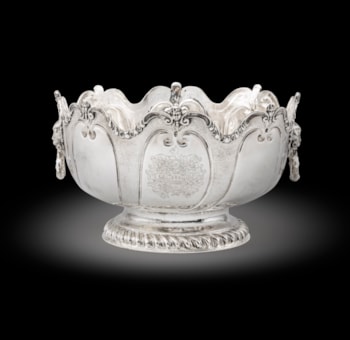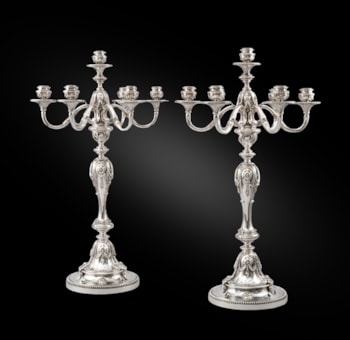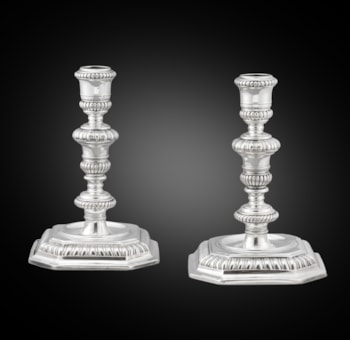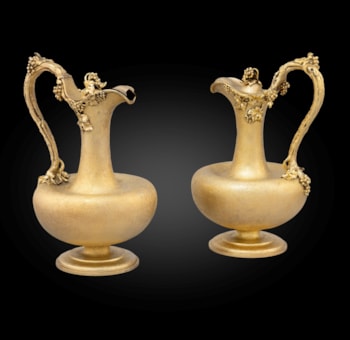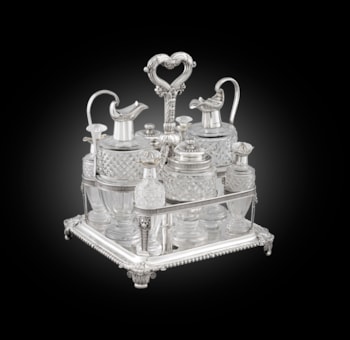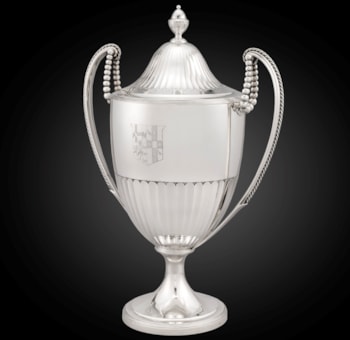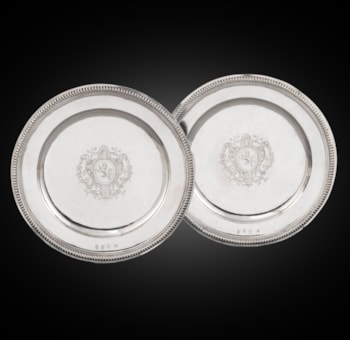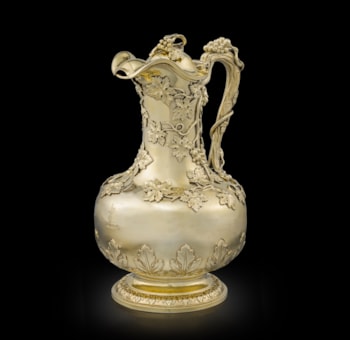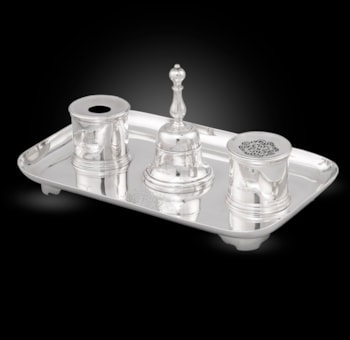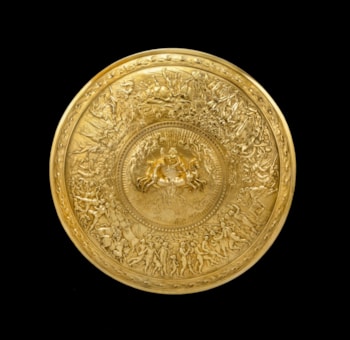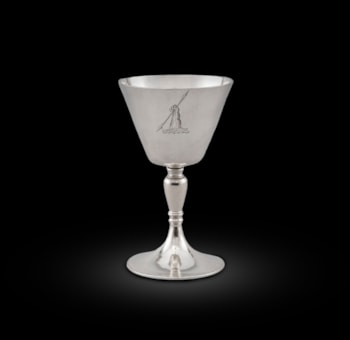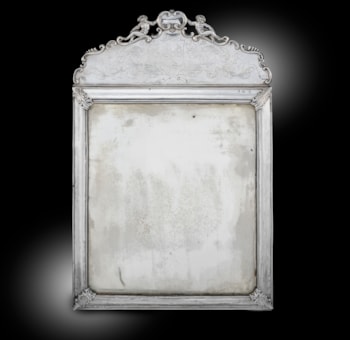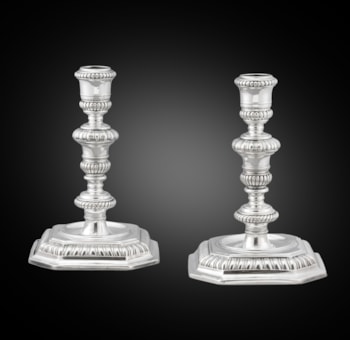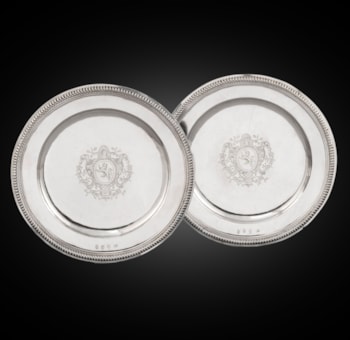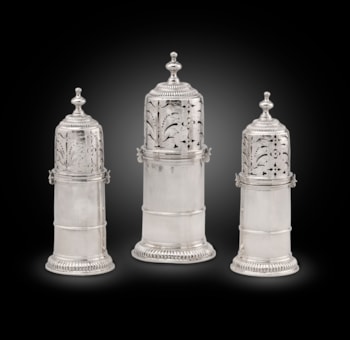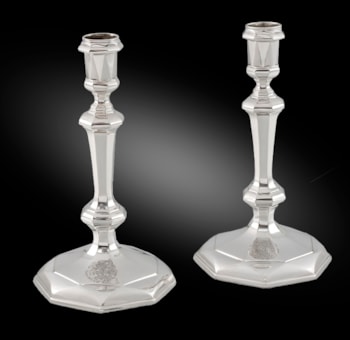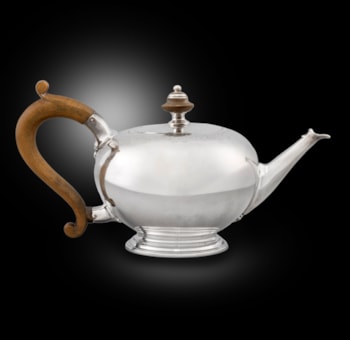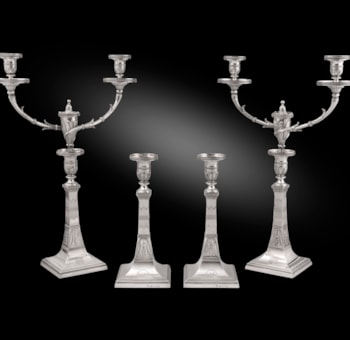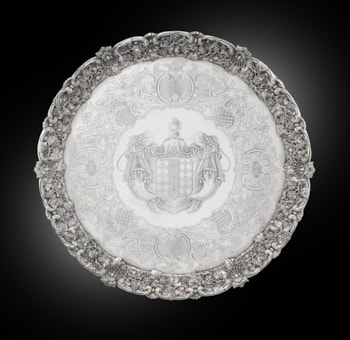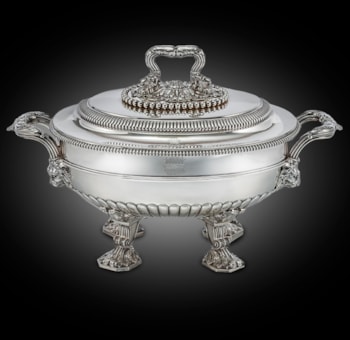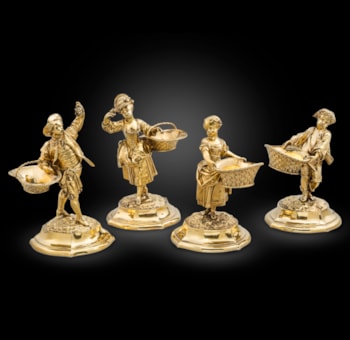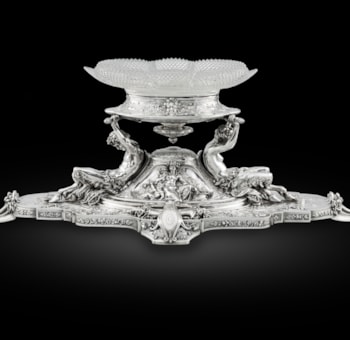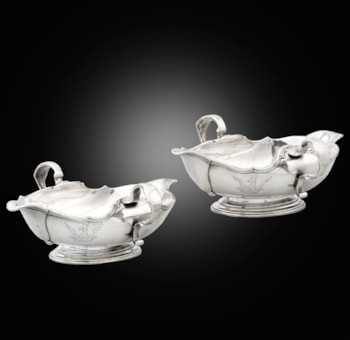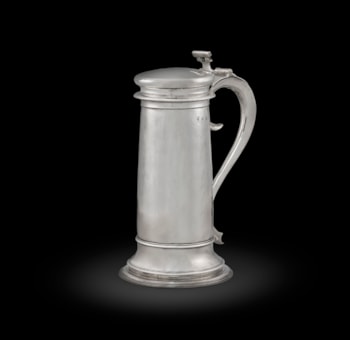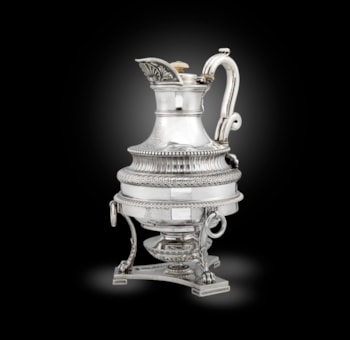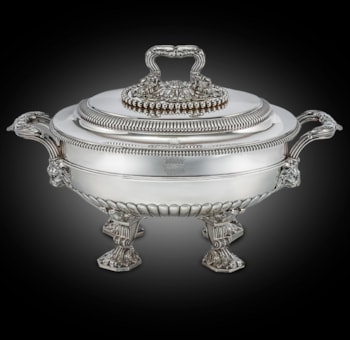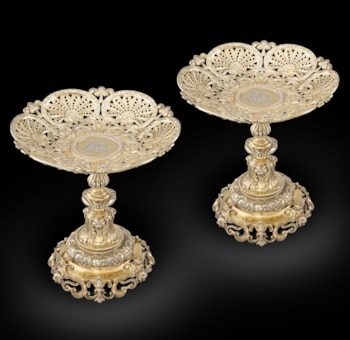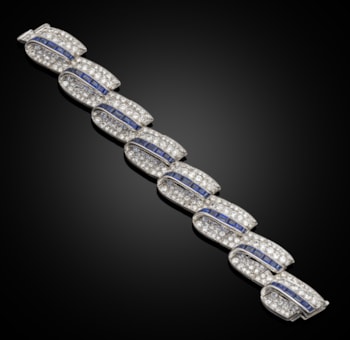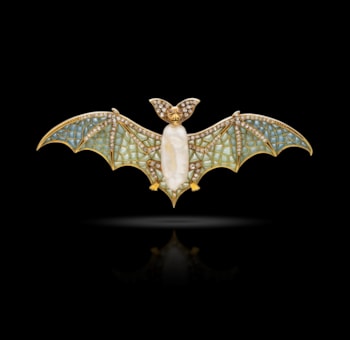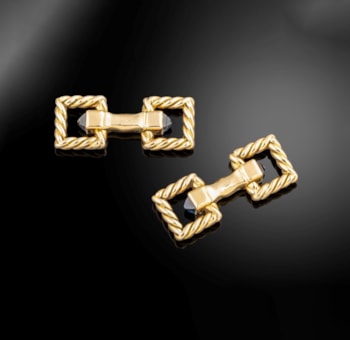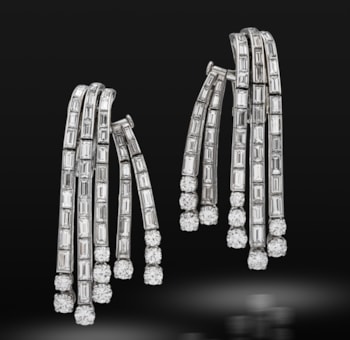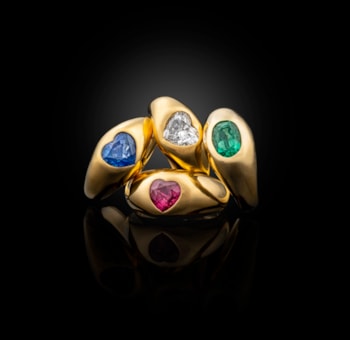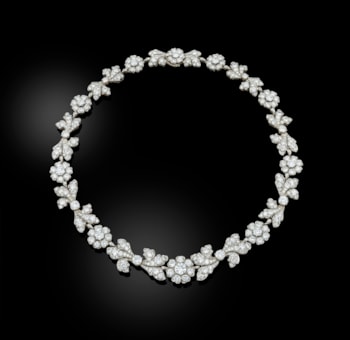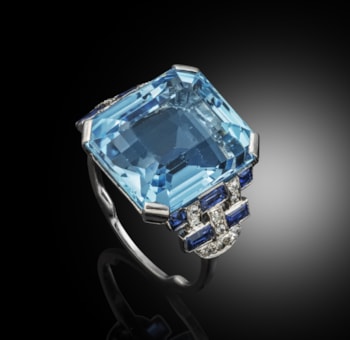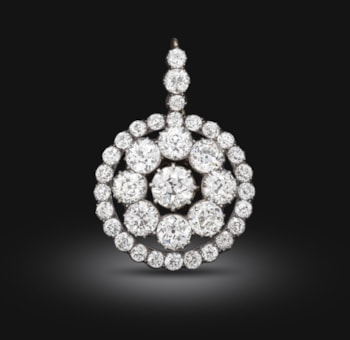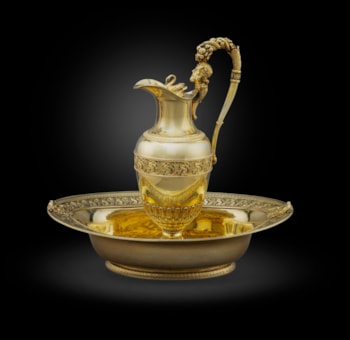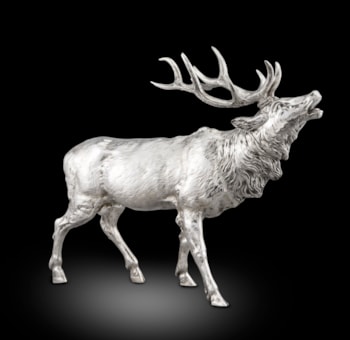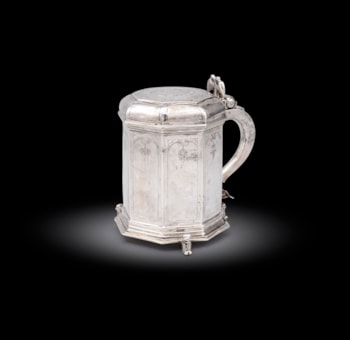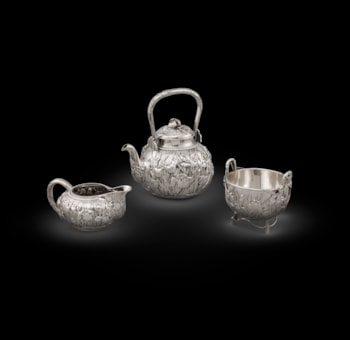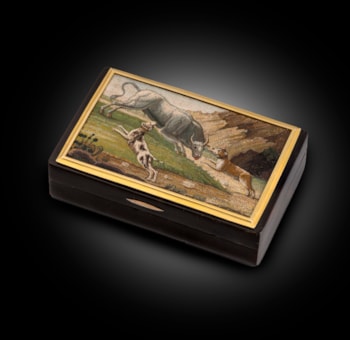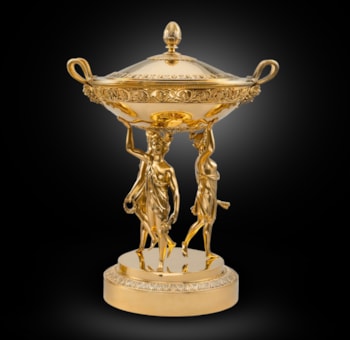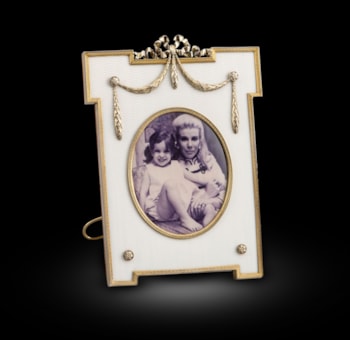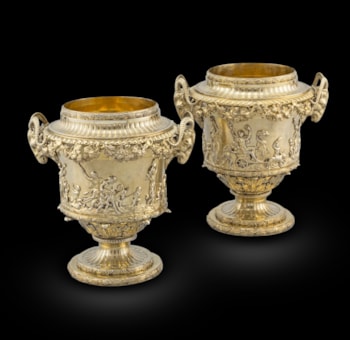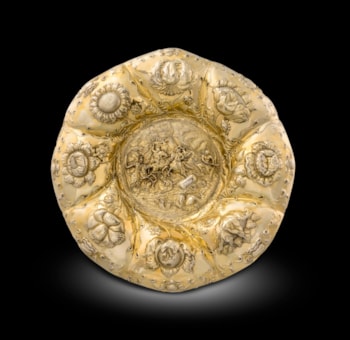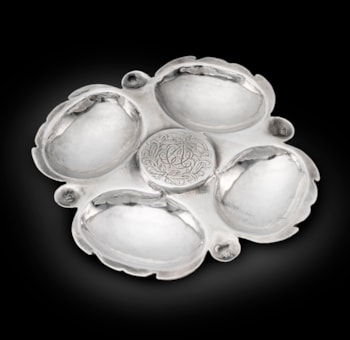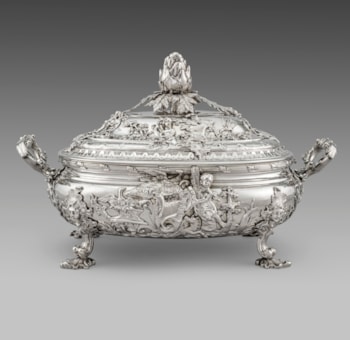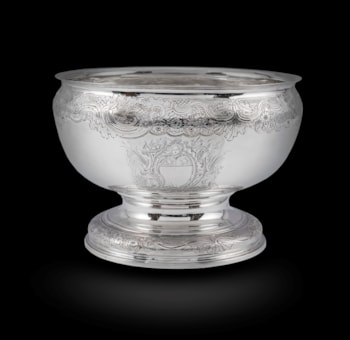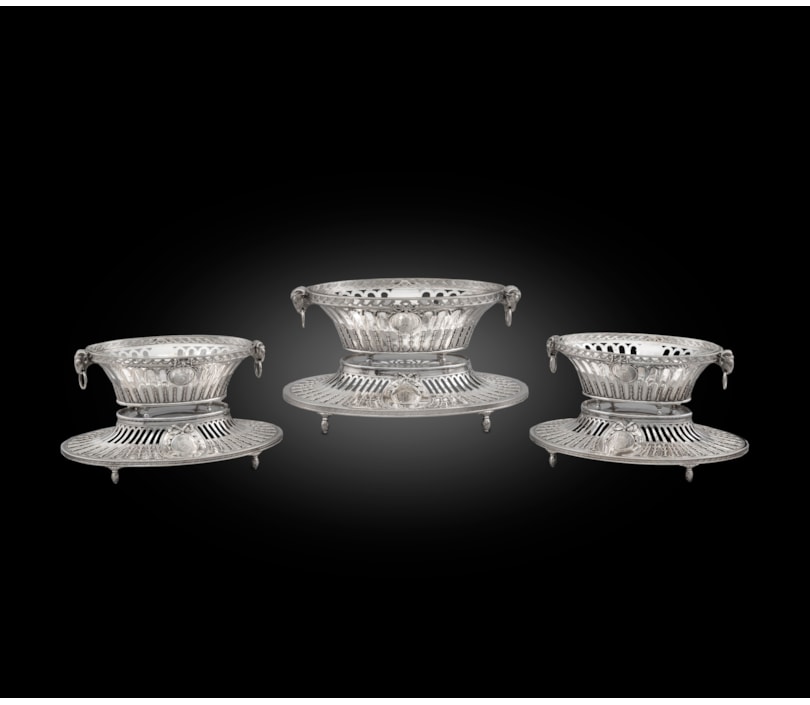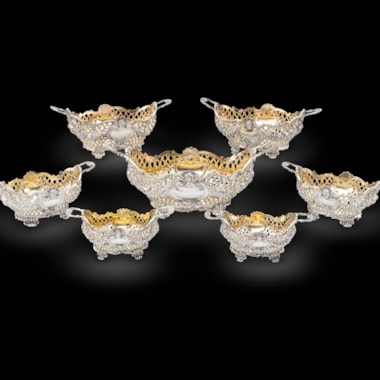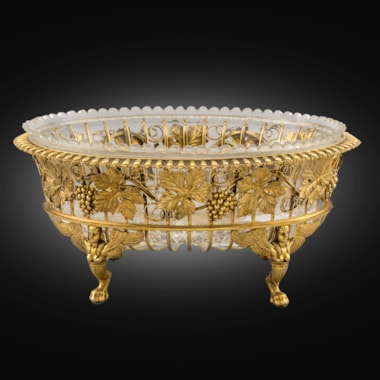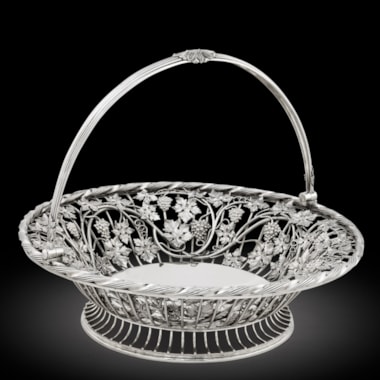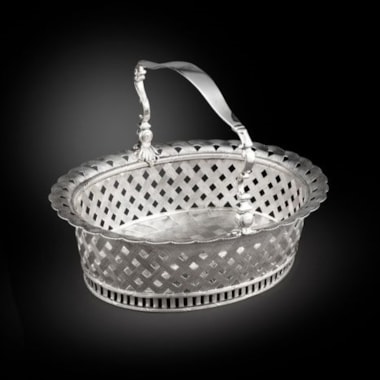Consisting of three oval pierced baskets on stand, one large and two smaller on acanthus bud feet. The bowls partly pierced and partly fluted with bellflowers, Vitruvian scroll borders, rams' head handles with pendant rings. On the sides ribbon-suspended roundels engraved with a coat of arms and crest.
The Coat of Arms of the Keymeys family, for colonel John Johnson of Glaiston, Rutland, who assumed the family name of Kemeys-Tynte when he married Jane Kemeys (1738 - 1825) on 19 February 1765.
The family claimed descent from a Stephen de Kemeys who held lands in the southern Welsh Marches, in Monmouthshire in the 1230s. A David Kemeys, the son of Ievan Kemeys of Began (near St Mellons) married Cecil, a daughter of Llewelyn ab Evan ab Llewelyn ap Cynfig of Cefn Mably in or around 1450. David was succeeded by his son, Lewis Kemeys and his son and heir in turn was John Kemeys, succeeded by his son, also named David (possibly born 1564). David's eldest son Edward Kemeys, High Sheriff of Glamorganshire for 1574, died without issue and the estate passed to a nephew, another David Kemeys, the son of Rhys Kemeys of Llanvair Castle (Llanvair Discoed), who also became Sheriff of Glamorgan for 1616. He was succeeded by his son Edward who had no issue and the estate therefore passed to Nicholas Kemeys, the third son of Rhys Kemeys. Nicholas Kemeys was MP for Monmouthshire 1628 to 1629 and High Sheriff of Monmouthshire for 1631 and Sheriff of Glamorganshire for 1638. At the outbreak of the English Civil War he was created a Baronet by King Charles I of England. He was a passionate supporter of the King and monarchy and as Custos Rotulorum of Monmouthshire played a leading and high-profile part in Monmouthshire during the Civil War. He was appointed Governor of Cardiff castle. As an ally of Sir Trevor Williams, 1st Baronet of Llangibby, Sir Nicholas led the defence of Chepstow Castle and was killed there in combat on 25 May 1648 after refusing to surrender after the Castle's fall. The location, within the castle, is marked by a plaque erected by members of the Kemeys family in 1935. He had married Jane, daughter of Sir Rowland Williams, Kt, of Llangibby Castle and left a son and heir, Sir Charles Kemeys, 2nd Baronet who also played an active role during the remainder of the war.
Taylor, William (1764) Son of William Tayler Citizen and Leatherseller of London, apprenticed to John Eaton 6 February 1765 and turned over the same day to his father. Free, I April 1772. First mark entered as
plateworker, in partnership with John Wakelin, 25 September 1776. Address:
Panton Street. Second mark, 9 May 1777. Heal records them as John Wakelin and William Taylor (successors to Parker and Wakelin), goldsmiths, Panton Street, 1776– 96. The latter spelling of the surname is normally now used but both the clerk's entry and signature are spelt Tayler. This partnership constituted the fourth link in the connection between George Wickes and
Robert Garrard. Taylor died 29 July 1792: 'At Stockwell Surrey after a lingering illness Mr Wm. Taylor goldsmith of Panton Street'
(The Gentleman's Magazine, p. 575 and European Magazine, p. 480).
You May Also Like




